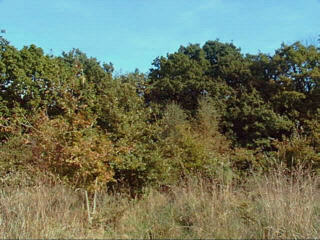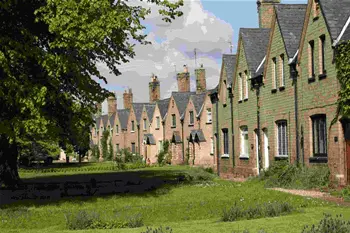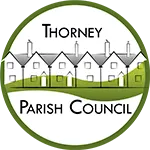About Thorney
The first recorded history of the village refers to Ancarig – the place where anchorites lived as religious hermits – in the sixth century. It became known as Thorney – the Isle of Thorns – reflecting the position of the island in the middle of the fens, or marshes. It may have looked something like the picture below with a mixture of trees (oak, holly, alder, willow), reeds and sedges.

Archaeological investigations indicate that there has been settlement around Thorney from the Iron Age, Bronze Age and Roman times, before the first Christian settlers. However, the Danish invaders destroyed the religious settlement in 870, though it is said that the monks of Thorney escaped the attack.
Thorney was a monastic establishment until 1539. From 1551, after the Dissolution of the Monasteries, the estate passed to the Russell family. They were Earls and later Dukes of Bedford. During the seventeenth century, the Dukes of Bedford were closely involved and major investors in draining the Fens, using the continental expertise of Cornelius Vermuyden and many others from France and the Low Countries. The village of Thorney became a settlement where French and other languages were spoken, and the oldest monument in the Abbey is dedicated to Ezekiel Danois, who ministered to the newcomers for twenty-one years. The countryside was used for arable farming and for livestock. The ruins of Thorney Abbey were used as the basis for the new parish church.
Twenty thousand acres of excellent agricultural land were reclaimed and farmed by tenant farmers, some of whom had experience of using similar reclaimed land abroad. Abbey House was built and rebuilt as a residence for the Dukes’ stewards, including major work finished in 1660 which very much resembles Thorpe Hall in Peterborough.
In 1780 John Byng of Torrington wrote of his visit to Thorney that it was “a little, melancholy out of the way place with one mean inn… I now took my walk of survey to the Abbey of Thorney. This curious old clump of gothic solemnity must surely be only a small part of what was… The figures over the West Window are much to be admired.“
The village had a fair on 1st July and 21st September each year, and a market was held until 1830. Towards the end of the 1800s, agriculture was depressed and the estate could not be profitable. It was therefore sold off by the Duke of Bedford in 1910.
The village began a new phase of development in the twentieth century and expanded as new areas of housing were developed. These are now established and well-kept residential areas. There are a range of businesses as well as the farming of the countryside. In recent years more homes have been added, together with a variety of larger industrial areas.
In recent decades the number of local people employed in agriculture has greatly decreased, and now most of the population live in the village itself rather than the surrounding farmland. Some agricultural cottages, farmhouses and buildings have been converted for residential use.
Model Village
From 1849, the seventh Duke of Bedford initiated the rebuilding of the village according to high aesthetic and practical standards as a ‘model village’ which would be good for tenants and tradespeople as well as for the estate.

Samuel Sanders Teulon was the architect chosen. The buildings included many cottages, whose rows form a major architectural feature of modern Thorney. Fresh water and sewage systems, a gas supply and engineering workshops supported the village, together with schools, a post office, shops and a relieving office for the poor and infirm.
The project was built in a picturesque style, borrowing from medieval and Tudor designs. The 19th Century industrial centre in the Tankyard is now a focus for village life, which includes the Village Hall, museum, fire station, a day nursery and the North Level Internal Drainage Board offices.
To learn more about the history of Thorney, it famous residents and the surrounding fens visit Thorney Museum.
